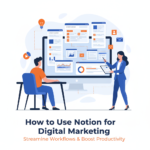
Integrating CRO into Your Overall Digital Marketing Strategy
Introduction
Conversion Rate Optimization (CRO) is a critical aspect of digital marketing that ensures traffic acquired through various channels is effectively converted into meaningful actions, such as sales, sign-ups, or leads. While businesses often focus on driving traffic through SEO, PPC, email marketing, and social media, CRO ensures that the efforts invested in acquiring visitors yield the highest possible returns.
Integrating CRO into your overall digital marketing strategy can significantly improve ROI, enhance user experience, and maximize conversions. This article will explore various approaches, tools, and best practices for seamlessly incorporating CRO into your digital marketing framework.
1. Understanding CRO and Its Role in Digital Marketing
a) What is CRO?
Conversion Rate Optimization (CRO) is the systematic process of improving a website or landing page to increase the percentage of visitors who take the desired action. These actions may include:
-
Making a purchase
-
Submitting a form
-
Signing up for a newsletter
-
Downloading a resource
b) Why CRO Matters for Digital Marketing
-
Maximizes ROI: More conversions from the same amount of traffic.
-
Improves User Experience: A/B testing helps identify user preferences.
-
Enhances Marketing Performance: Better conversion rates mean lower customer acquisition costs.
-
Data-Driven Decisions: CRO is based on data, minimizing guesswork in marketing strategies.
2. The Intersection of CRO and Key Digital Marketing Channels
a) CRO & SEO
Search Engine Optimization (SEO) and CRO must work together to ensure that organic traffic converts effectively.
-
Optimizing Landing Pages: Keyword-rich, intent-driven content aligned with user expectations.
-
Reducing Bounce Rates: Ensuring pages load quickly, are easy to navigate, and provide valuable content.
-
Improving UX for Mobile Users: Mobile-friendly designs and fast-loading pages increase conversions.
b) CRO & PPC (Pay-Per-Click)
PPC campaigns generate traffic, but CRO ensures those visitors take action.
-
Optimizing Ad Copy: A/B test headlines, descriptions, and CTAs to improve click-through and conversion rates.
-
Landing Page Alignment: Ensuring consistency between the ad message and the landing page.
-
Reducing Cost per Acquisition (CPA): A higher conversion rate leads to lower costs for each new customer.
c) CRO & Email Marketing
Email marketing is a powerful tool, but its effectiveness depends on the ability to convert recipients into customers.
-
A/B Testing Subject Lines: Optimizing open rates leads to more conversions.
-
Personalization Strategies: Customized email content based on user behavior increases engagement.
-
Optimized Call-to-Action (CTA): Testing different CTAs for better click-through rates.
d) CRO & Social Media Marketing
Social media generates engagement, but CRO ensures those engagements translate into conversions.
-
Landing Pages for Social Campaigns: Dedicated pages optimized for conversions.
-
Retargeting Strategies: CRO principles applied to retargeting campaigns improve ROI.
-
Social Proof & UGC: User-generated content and testimonials enhance trust and conversions.
3. Steps to Implement CRO Across Digital Marketing Strategies
a) Conducting User Research
-
Heatmaps & User Behavior Tools: Platforms like Hotjar and Crazy Egg reveal user interactions.
-
Customer Surveys & Feedback: Direct feedback helps identify pain points.
-
A/B Testing: Testing different elements such as headlines, CTA buttons, and layouts.
b) Creating a Data-Driven CRO Strategy
-
Identify Key Performance Indicators (KPIs): Conversion rate, bounce rate, session duration.
-
Leverage Analytics Tools: Google Analytics, HubSpot, and other platforms provide actionable insights.
-
Segmentation & Personalization: Creating audience segments for tailored marketing approaches.
c) Implementing CRO Best Practices
-
Clear and Compelling CTAs: Action-oriented and placed strategically.
-
Reducing Form Fields: Simplified forms improve lead generation.
-
Improving Page Speed: Faster loading pages reduce abandonment rates.
-
Mobile Optimization: Ensuring a seamless experience across all devices.
4. Advanced CRO Techniques for Digital Marketing Success
a) AI & Machine Learning in CRO
-
Predictive Analytics: AI tools predict user behavior for better targeting.
-
Chatbots & Automation: Enhancing user engagement and guiding conversions.
-
Personalized Content Delivery: AI-driven content recommendations improve engagement.
b) Multi-Touch Attribution in CRO
Understanding how various touchpoints contribute to conversions helps optimize marketing channels effectively.
-
First-Touch vs. Last-Touch Attribution: Recognizing the role of each channel in the customer journey.
-
Multi-Channel Funnel Analysis: Identifying top-performing customer acquisition paths.
c) Behavioral Retargeting
Retargeting campaigns that leverage behavioral data ensure that users who abandon carts or show intent are encouraged to complete conversions.
-
Dynamic Retargeting Ads: Showing users personalized product recommendations.
-
Email Retargeting Campaigns: Sending reminders and offers based on previous user behavior.
5. Measuring and Improving CRO Performance
a) Key CRO Metrics to Track
-
Conversion Rate: Percentage of visitors who take the desired action.
-
Bounce Rate: The rate at which users leave without engaging.
-
Time on Site & Page Views: Engagement indicators.
-
Customer Lifetime Value (CLV): Understanding long-term revenue from conversions.
b) Continual CRO Optimization Process
-
Regular A/B Testing: Continuous improvement through testing.
-
Customer Feedback Loops: Refining strategies based on real user input.
-
Adapting to Market Trends: Implementing new strategies as digital marketing evolves.
Conclusion
Integrating CRO into your digital marketing strategy ensures that every dollar spent on acquiring traffic yields maximum returns. From SEO and PPC to email and social media, CRO enhances user experience, lowers acquisition costs, and improves overall marketing performance.
Key Takeaways:
-
CRO should be a core component of all digital marketing efforts.
-
A data-driven approach is essential for optimizing conversions.
-
Personalization and AI-driven strategies can enhance engagement and conversion rates.
-
Regular testing and continuous improvement lead to long-term digital marketing success.
By implementing these strategies, businesses can stay ahead in the competitive digital landscape while achieving higher conversions and maximizing ROI.
Author



